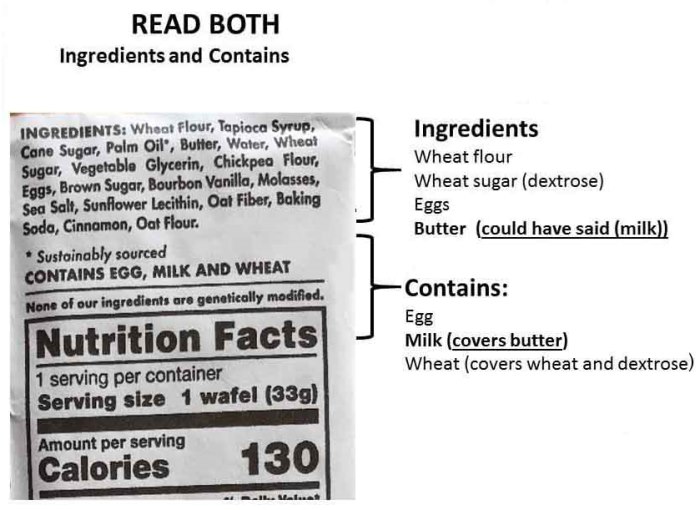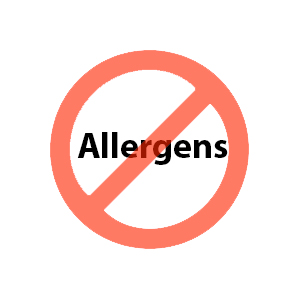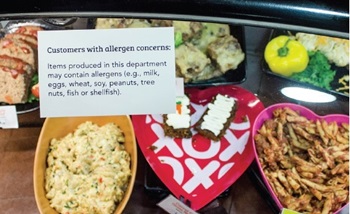Allergy, Food allergy, Asthma, Food, Allergen, Shellfish
Anatomy of Food Allergen Recalls
Class 1 recalls are defined as situations where there is a reasonable probability that the use of or exposure to a food product will cause serious adverse health consequences or death to humans. ...
Anatomy of Food Allergen Recalls
Class 1 recalls are defined as situations where there is a reasonable probability that the use of or exposure to a food product will cause serious adverse health consequences or death to ...
We are sorry, we could not find the related article
If you are curious about SQ1 Economy of Trust and Food Safety
Please click on:
Subscribe to SQ1 Economy of Trust - Food Safety
Finding Food Allergens Where They Shouldn't Be
What food allergens are the main offenders?
Food Labels: Read It Before You Eat It!
The AAAAI offers articles written and reviewed by experts reading food labels for allergens.
Allergies and Food Safety
Questions and answers about food allergies and applicable labeling regulations, especially as they pertain to meat and poultry products.
Sesame as an Allergen in Foods
The Food and Drug Administration (FDA or we) invites data and other information on the prevalence and severity of sesame allergies in the United States and the prevalence of ...
Allergens: Where Food Safety and Labeling Intersect
Given the potentially fatal consequences of an undeclared allergen, relying on food labels to ensure the safety of allergic consumers may not seem sufficiently protective.
Addressing Food Safety and Hygiene with USDA-Accepted Conveyor
Contamination has become an expensive and serious health risk for the food processing industry. The frequency of food intolerances has risen significantly over the past three decades, ...
How to Read Food Labels
Managing life with a food allergy means reading packaged food labels—every time you buy that food. While all ingredients in a food are supposed to be listed in the ingredients list, FALCPA ...
Food allergen labelling and information requirements under the EU Food Information for Consumers Regulation no. 1169/2011: technical guidance
The Annex II allergens are: Cereals containing gluten namely wheat (such as spelt and Khorasan wheat), rye, barley, oats and their hybridised strains and products thereof, except: a) ...
Controlling cross-contamination by food allergens
Click on the article title to read more.
Food labeling issues for severe food allergic patients
Food allergy carries high importance and responsibility, affecting an estimated 220 million people worldwide. It is a frequent cause of food-induced a…
Allergen control
safe food research, nutritional information, professional networks and events from safefood. Designed to support public health relating to food safety and healthy eating.
Special Considerations for Allergen Testing
The article describes why new product concepts may need new packaging concepts and how ideas in both areas are initiated and fulfilled.
Key Trends Reinforce Food Allergen Testing Market Across North America
Food allergen testing is expected to witness consistent demand with strong support from regulatory agencies and increased consumer awareness of food allergies.
Investigation: food allergens
New research by Unchecked.uk and the Times has found that nearly one in five food samples in England, Wales and Scotland contains at least one undeclared allergen.
Food Allergy
Introduction The adverse reaction to food is a very complex matter and this summary can cover only the basics. Further reading is strongly recommended, especially if one is investigating a ...
Allergens & FSMA: What You Need To Know
How has allergen control changed with the Food Safety Modernization Act (FSMA)?
Food Labels
The Food Allergen Labeling and Consumer Protection Act of 2004 requires that foods containing major food allergens be listed in plain English in the ingredient list, in parentheses within ...
Navigating Food Allergen Labeling Requirements
Verifying the accuracy of allergen information on food labels throughout the entire supply chain is critical to protect the estimated 32 million people in the nation who live with food ...













